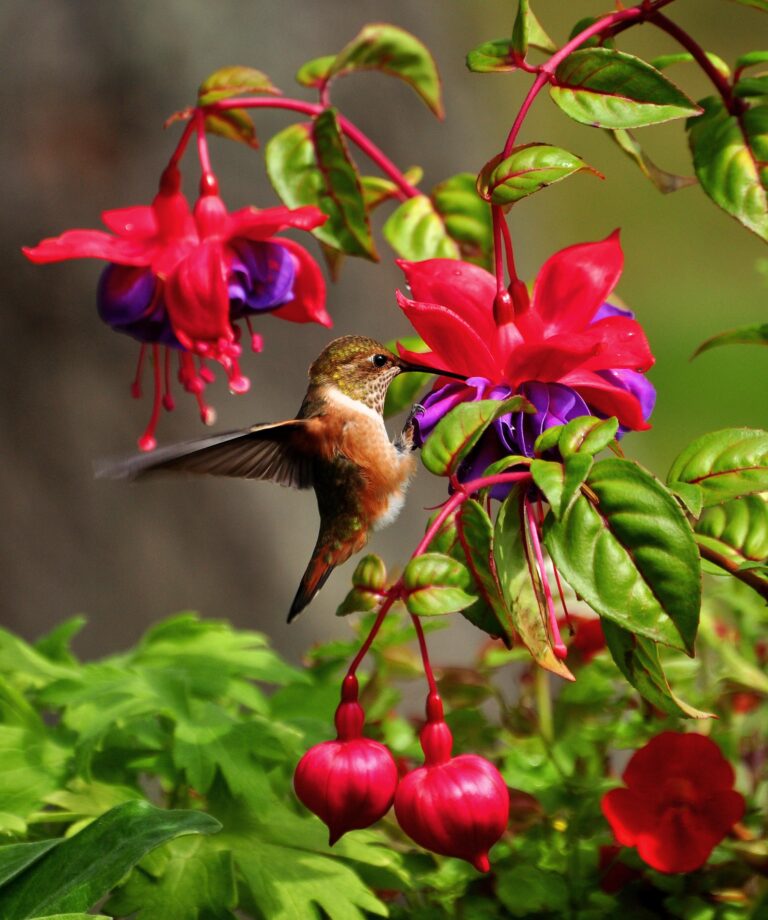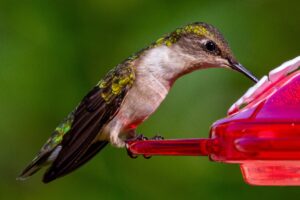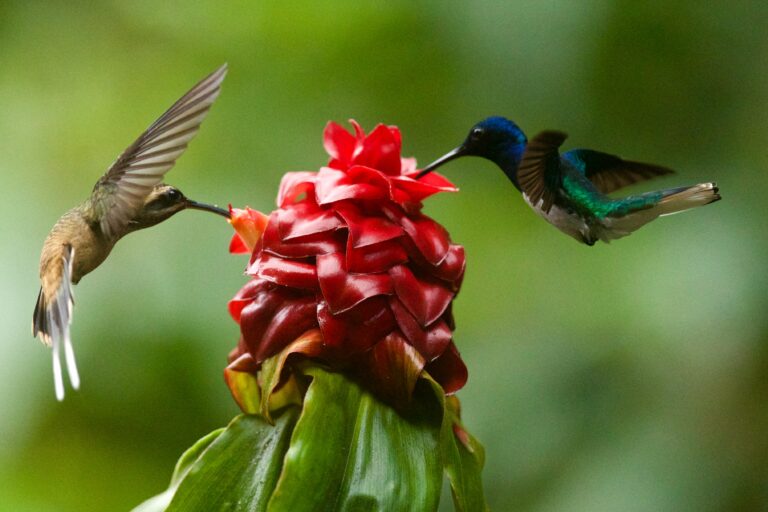Why You Should Never Put Food Coloring in Hummingbird Food
Hummingbirds are fascinating creatures that bring joy and beauty to our gardens. I personally have just recently discovered the joy of having a feeder, and have picked up a few really good tips to keep the birds healthy. Many people enjoy attracting these delightful birds by offering them food, commonly made by mixing sugar and water. However, it is essential to never put food coloring in hummingbird food. In this article, we will explore the reasons why food coloring should be avoided and provide alternative ways to attract hummingbirds.
The problem with food coloring
Harmful effects on hummingbirds
Hummingbirds have delicate systems that can be easily disrupted by foreign substances. Food coloring contains artificial dyes that may have adverse effects on their health. These dyes are often made from chemicals that can potentially harm the birds, leading to various health issues and even death.
Disruption of natural feeding patterns
Food coloring alters the appearance of nectar, making it different from the natural food sources hummingbirds rely on. By adding artificial colors, we may unintentionally change their preferences and disrupt their natural feeding patterns. This can lead to their dependency on colored nectar, which is not nutritionally beneficial to them. Depending on exactly what dye is used, it could be very toxic for them.

Potential risks to the environment
When hummingbirds consume food with added coloring, they may excrete colored waste. This can stain plants, feeders, and other surfaces, creating an unnatural appearance in the ecosystem. Additionally, these colored substances may leach into the environment, potentially polluting water sources and harming other wildlife.
DIY hummingbird food recipe
To provide safe and nutritious food for hummingbirds, it is best to make your own hummingbird food at home. The recipe is straightforward, using simple ingredients that can be found in most households. Make sure to use regular white sugar only.
Ingredients:
1 part white granulated sugar
4 parts water
Instructions:
Boil the water to remove any impurities.
Stir in the sugar until completely dissolved.
Let the mixture cool down to room temperature.
Pour the homemade nectar into clean hummingbird feeders.
Place the feeders in shaded areas to prevent fermentation.
Make sure to keep the food in your feeders fresh to make sure your hummer’s stay healthy.

Benefits of using natural nectar
Nutritional value for hummingbirds
Homemade nectar made from sugar and water closely resembles the natural nectar found in flowers. This provides hummingbirds with essential carbohydrates for energy, supporting their high metabolic rates. By avoiding food coloring, we ensure that the nectar is as close to their natural food sources as possible.
Encouraging natural behavior and instincts
Using natural nectar encourages hummingbirds to engage in their natural feeding behaviors. These magnificent birds have evolved to seek out specific flowers based on color, shape, and scent. By providing them with unaltered nectar, we allow them to exercise their natural instincts and maintain their important pollination roles.
Attracting hummingbirds without food coloring
There are alternative methods to attract hummingbirds without relying on food coloring. By creating a hummingbird-friendly environment, we can entice these delightful creatures to visit our gardens naturally.
Planting native flowers
Hummingbirds are attracted to vibrant, tube-shaped flowers, particularly those in shades of red, orange, and pink. Planting a variety of native flowering plants that bloom at different times of the year ensures a continuous food supply for hummingbirds.

Providing fresh water sources
Hummingbirds require fresh water for drinking and bathing. Placing very shallow birdbaths, about 1cm deep, or misters in your garden can attract these birds and provide them with a refreshing spot to cool down and clean their feathers. I’m adding a mister to the patio next spring.
Creating suitable habitats
Hummingbirds need suitable nesting areas and shelter from predators. By planting trees, shrubs, and vines, you can provide them with safe places to build their nests and rest. They’ll appreciate the shade and somewhere cozy and safe to rest.
Hummingbirds bring a unique charm to our gardens, and providing them with safe and natural food is crucial for their well-being. Avoiding the use of food coloring in hummingbird food ensures that we do not negatively impact their health and natural feeding patterns. By following a simple DIY recipe and creating an inviting environment, we can enjoy the presence of these remarkable birds while nurturing their instincts.
Frequently Asked Questions
No. Even natural food colorings can have negative effects on hummingbirds. It is best to avoid any type of coloring in their food.
It is important to maintain the 1:4 ratio of sugar to water to provide sufficient nutrition for hummingbirds. Decreasing the sugar concentration can lead to inadequate energy intake for these high-energy birds.
Hummingbird feeders should be cleaned every three to five days to prevent the growth of mold and harmful bacteria. In very hot weather you should clean the feeders every other day.
Honey should never be used as a substitute for sugar in hummingbird food. Honey can promote the growth of harmful bacteria and molds, which can be fatal to hummingbirds.
To prevent ants, use an ant moat or apply an insect barrier on the feeder pole. To deter bees, choose feeders with bee guards or install bee-proof mesh around the feeding holes. Try stay away from the color yellow, as wasps are attracted to this.


